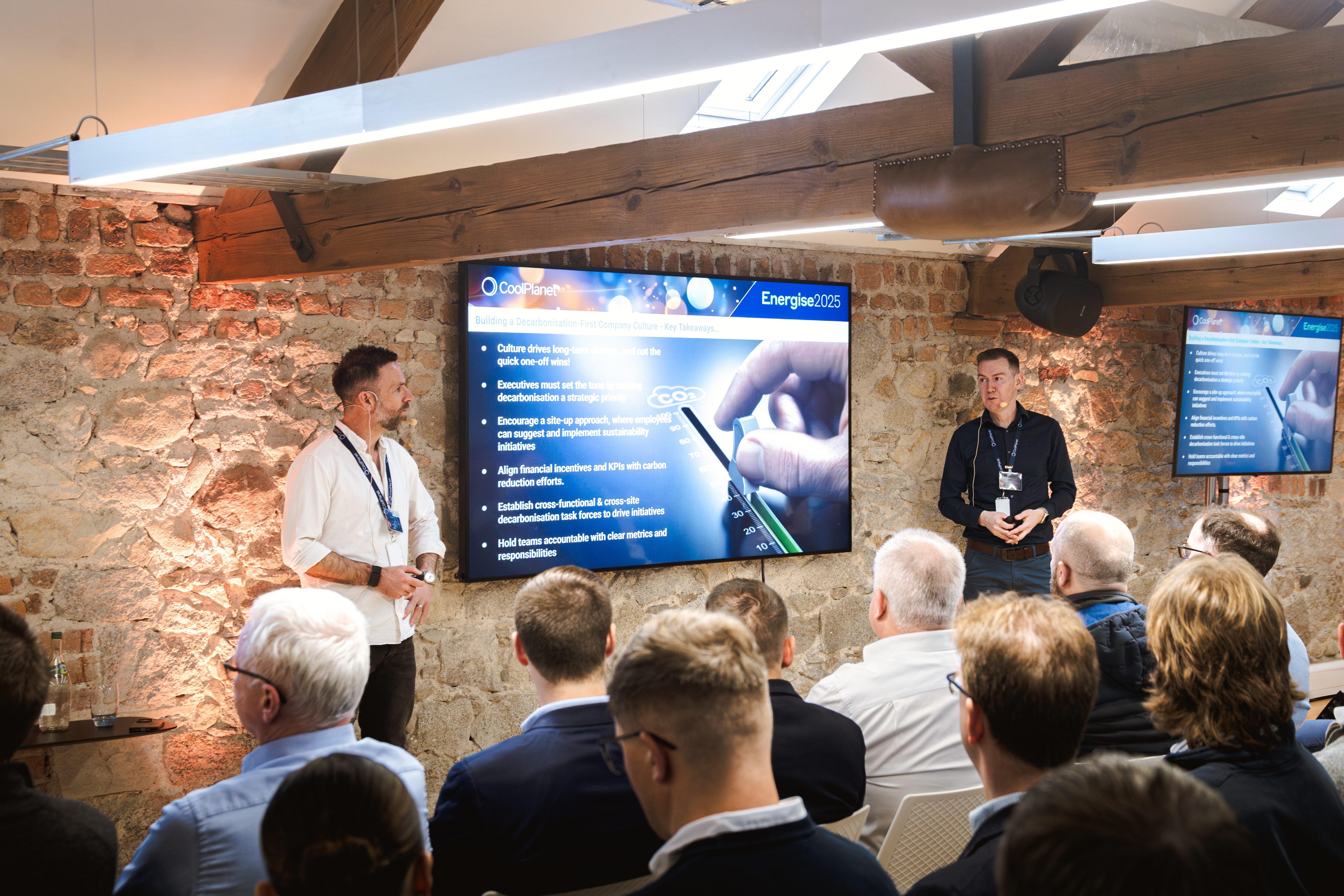The energy transition is accelerating, and the path to decarbonisation is becoming clearer—but not necessarily easier. At CoolPlanet’s Energise conference, industry leaders, sustainability experts, and energy managers came together to tackle the biggest decarbonisation challenges facing manufacturers today. From AI-driven energy efficiency to overcoming data blind spots, here are the most important insights from the event.
1. Decarbonisation is simple in theory but hard in practice
Eliminating fossil fuel reliance sounds straightforward, but execution is the challenge. The energy transition demands structured planning, investment, and coordination across multiple stakeholders. Without a clear roadmap, progress stalls.
2. The rise of renewables brings new challenges
Renewable energy costs are plummeting, and global capacity is surging, but the increase in renewables introduces volatility, negative pricing, and grid instability. Companies need smarter strategies to manage demand-side flexibility, energy storage, and PPAs (Power Purchase Agreements) to maintain cost control and resilience.
3. The biggest barrier? Siloed, incomplete, or missing data
Many enterprises still struggle with fragmented energy data. Without a consolidated view, decision-making suffers. AI and automation can bridge this gap by simplifying data collection, surfacing insights, and enabling real-time monitoring.
4. AI and ML: Force multipliers for decarbonisation
Artificial Intelligence isn’t just a buzzword—it’s accelerating energy savings. AI-powered tools are making it easier to identify inefficiencies, automate workflows, and optimize performance without deep domain expertise. AI-driven dashboards, anomaly detection, and predictive modeling are reducing friction in energy management. Decision-makers no longer need to dig through endless spreadsheets—AI surfaces the most critical insights instantly. The result? 10x engagement and 10x decarbonisation velocity.
5. Overcoming the “pilot purgatory” trap
Only 30% of pilot projects make it to full-scale deployment. Why? Lack of a structured, repeatable approach. Companies need standardized frameworks, cross-functional teams, and clear success metrics to scale beyond single-site initiatives.
6. The carbon reduction metrics that matter
Tracking sustainability efforts requires more than vague commitments. Three key metrics emerged as essential for measuring progress:
- Carbon Reduction Velocity (CRV): How many tonnes of CO2 are removed per year?
- Operational Drift (OD): Are plants maintaining efficiency over time?
- Opportunity Effectiveness (OE): Are implemented projects delivering expected savings?
7. Aligning plant room to boardroom
A major disconnect remains between corporate sustainability strategies and operational execution. Successful decarbonisation requires financial alignment, real-time reporting, and stakeholder engagement across the entire enterprise.
8. Programmatic decarbonisation wins over ad-hoc efforts
Companies that standardise and scale best practices through a programmatic approach achieve faster implementation, better cost-effectiveness, and improved regulatory compliance. A structured framework, such as ISO:50001, ensures repeatability and long-term impact.
9. Engage the operators. Your frontline holds the key
Operators understand assets best but are often left out of decarbonisation discussions. Empowering them through easy-to-use tools and workflows ensures adoption and sustainability.
10. The cost of inaction is rising
Energy costs are volatile, carbon taxes are increasing, and regulatory pressures are mounting. Companies that act now will gain a competitive edge by reducing long-term costs, increasing resilience, and achieving ESG targets sooner.
Final thoughts
Decarbonisation is no longer a future objective—it’s a present necessity. CoolPlanet's Energise conference reinforced the importance of integrating AI, breaking down data silos, and scaling energy efficiency solutions across global portfolios. Companies that embrace a structured, data-driven approach will lead the transition and unlock significant financial and operational benefits.
So, where is your organisation on its decarbonisation journey? And more importantly—what’s your next move?





